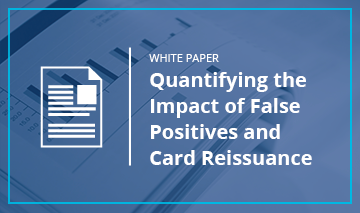 Quite a bit, it turns out. According to PYMNTS’ Global Fraud Index, from the first quarter of 2015 to the first quarter of 2016, the dollars at risk per every $100 in online sales rose from $1.89 to $7.30, an increase of nearly 400%. Countless publications predicted an increase in fraud in 2016 due to the impact of the messy and slow implementation of EMV, but few, if any, predicted a jump quite like this.
Quite a bit, it turns out. According to PYMNTS’ Global Fraud Index, from the first quarter of 2015 to the first quarter of 2016, the dollars at risk per every $100 in online sales rose from $1.89 to $7.30, an increase of nearly 400%. Countless publications predicted an increase in fraud in 2016 due to the impact of the messy and slow implementation of EMV, but few, if any, predicted a jump quite like this.
How Much of an Impact Did EMV Have?
Fraud attacks, which are defined as attempts by fraudsters to steal - even if they’re not successful, have increased 26% in the United States since the October EMV shift. According to Ron Andrews, VP at Convergys, the transition to EMV caused “some complications” for merchants and security teams trying to prevent fraud.
While many sources, including Javelin Strategy and Research, as well as our own blog, have shown card not present fraud increasing irrespective of the EMV shift, the 27% increase in fraud attempts between Q4 2015 and Q1 2016 indicate there’s something else at play. PYMNTS noted there is typically an increase in fraud attempts after the holiday season, but never an increase this large - which hints that the issuance of chip cards, and the difficulties in perpetuating counterfeit fraud, have in fact moved criminals more rapidly to online channels.
Which Industries Are Most At Risk?
In 2016, the attack rate per 1,000 transactions for all industries combined sat at 34. However, unsurprisingly, the luxury goods segment hurt the most with an attack rate of 93 per 1,000 transactions. Worse yet, this is a 50 point increase over 2015’s attack rate of 43. Digital goods increased to an attack rate of 35 in 2016, up from 12 in 2015, and rounding out the top three, clothing & footwear increased to 34 from 25 in 2016.
When looking at these attack rates as a potential cost for the retailers, the numbers are even more jarring. As a percentage of revenue, the digital goods segment could potentially lose 10.8%, luxury 9.5% and clothing & footwear, 7.2%.
The good news is that retailers are catching and deterring quite a large portion of these fraudulent attempts, though in 2014, U.S. retailers lost $32 billion to fraud. In 2015, approximately 1.3% of revenue was lost to fraud, a 2X increase over the year prior.
How Is This Affecting the Customer?
If you’re a regular reader of our blog, you know we love to harp on the impact of customer disturbances - for both issuers and merchants. There’s a good reason why. Fraud prevention often comes at a cost, and the cost is potentially frustrating and even embarrassing a customer at the point of sale.
Per Andrews, “Making somebody prove they are who they say they are creates an awkwardness at the beginning of a customer service transaction. It means I don’t trust you until you prove to me this information and answer these questions. If you don’t, I’m not going to service you.”
It’s very easy to imagine swearing off an online merchant or a particular card altogether after a bad enough experience, but what kind of impact do fraud false positives and other customer disturbances really have? Find out in our newest white paper, 2016 Industry Report: False Positives and Card Reissuance, below:


